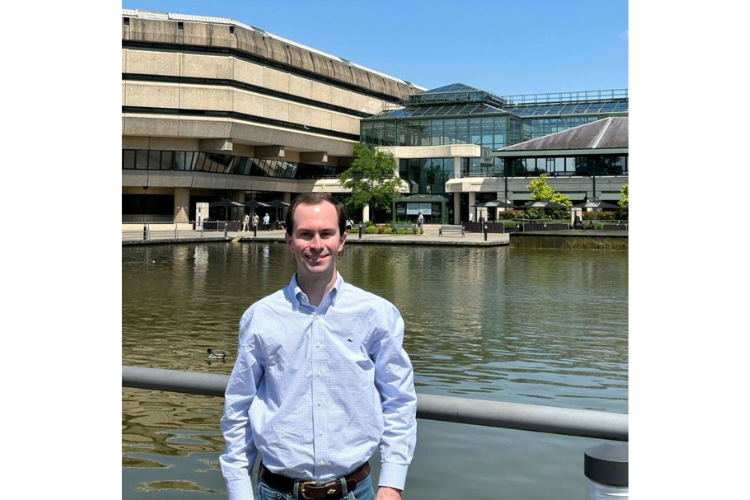Graduate Student Researches Antisemitism at the British Archives

This article is written by Robert Billups, a sixth-year PhD candidate in Emory’s Department of History and the 2023–2024 Ambrose Monell Foundation Funded National Fellow in Technology and Democracy for the Jefferson Scholars Foundation in Charlottesville, Virginia.
My research on violence against the US civil rights movement began in 2018, when I followed a story from childhood to Emory’s Stuart A. Rose Manuscript, Archives, and Rare Books Library. I grew up in and around Meridian, Mississippi, where in 1968 Ku Klux Klan (KKK) bombers dynamited Temple Beth Israel, the town’s Reform congregation, before trying to assassinate one of the congregation’s board members, Meyer Davidson. People often told me about how Temple Beth Israel’s leadership partnered with the Anti-Defamation League (ADL), the local police, and the FBI to foil the bomb plot against Davidson and to snuff out the area’s KKK.
It wasn’t until researching in the Rose Library that I learned the bombers targeted Temple Beth Israel and Davidson largely for their roles in fundraising for seven African American churches bombed or burned by Klan members. Those attacks and the congregation’s efforts to address them alerted me to links between violence against Jews and African Americans during the civil rights era, both in Meridian and the wider US South. While exploring those connections in the American Jewish Archives in Cincinnati, Ohio, I realized the far-right networks and contextual forces that led some mid-century white supremacists to anti-Black and antisemitic violence were not confined the US South, or even to the United States. I asked for help from the Tam Institute’s faculty and grant program in exploring archives beyond US borders.
I am deeply grateful to Tam Institute’s Jeffrey Lesser and graduate student grant program for supporting my trip to the British National Archives to research international patterns of antisemitism and their intersections with the US civil rights movement’s opposition.
When I asked Dr. Lesser for guidance on furthering my project’s international dimensions, he suggested the records of the British Foreign Office, which encompasses the UK government’s network of embassies and consulates. During the late 1950s and early 1960s, Foreign Office administrators expressed concerned about the possible resurgences of fascism and antisemitism. Embassy and consulate offices around the world reported fascist activity and anti-Jewish vandalism and violence, and the British National Archives houses those records in London.
I spent a week with those reports and related files, documents that shaped my understanding of the US civil rights movement’s place in a global post–World War Two moment. As antisemitic violence spiked in the civil rights South (1958–1960), anti-Jewish organizing, vandalism, and attacks increased in parts of South Africa, Latin America, and non-communist Europe (especially France and West Germany). I also learned of far-right Hungarian expatriates’ anti-Jewish organizing and violence in asylum countries after the failed 1956 Hungarian Uprising—a transnational influence about which I knew little before the research trip.
The Foreign Office records illuminate how antisemitic bombings in the civil rights South contributed to a global uptick in known anti-Jewish violence around 1960. Even though far-right antisemites typically operated on their home countries’ fringes, those extremists lashed out against international forces that, they believed, threatened white rule at home and abroad. Decolonization struggles in Africa, African and African American civil rights movements, nonwhite migrations to Europe, and the prosecution of the Nazi war criminal Adolph Eichmann moved hardcore white supremacists around the world to antisemitic attacks. Those assailants usually struck nearby figures or institutions that posed or symbolized threats to white supremacy, and they often scapegoated Jewish people and networks as such threats. Whether in Europe, the US South, or South Africa, the bombers and arsonists who attacked Black and Jewish homes and houses of worship in the late 1950s and 1960s often understood their violence as contributions to a larger pushback to against forces that put white rule on the defensive after World War Two.